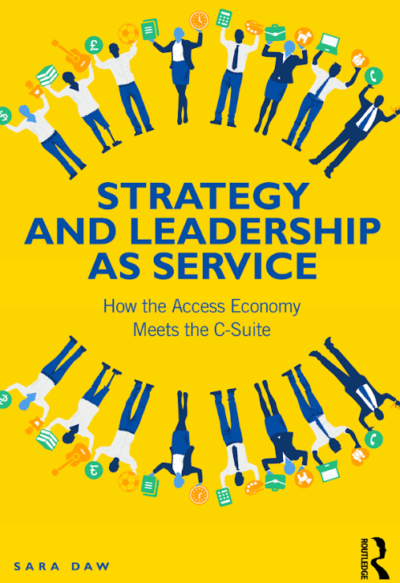
Guest post by Sara Daw, who is Group CEO of The CFO Centre and The Liberti Group, and the author of Strategy and Leadership as Service – How the Access Economy Meets the C-Suite, which explores the fractional leadership trend.
For technology SMEs, scaling quickly is often a race against both market disruption and well-funded Big Tech rivals. Building the right executive team to support that growth is one of the toughest challenges founders face.
Fractional Leaders Are Helping Technology
Recruiting a full-time C-suite can be a huge financial commitment and, in many cases, unnecessary when the immediate need is targeted expertise. Instead of over-investing too early, many technology SMEs are turning to fractional executives. These are high-calibre leaders who work with multiple companies on a part-time or flexible basis.
Many fractional leaders come from senior roles in established organisations and have chosen portfolio careers for greater variety and autonomy. They bring a wealth of experience across functions such as technology, finance, marketing, people, and sales. The result is specialist support delivered at the right time and in the right measure to help ambitious SMEs grow.
Why Tech SMEs Are Turning to Fractional Leadership
The pressure points for technology SMEs are particularly acute. Founders often face the challenge of scaling products and infrastructure without building up costly technical debt. They must also manage compliance and cybersecurity risks, compete for specialist talent in an overheated market, and build repeatable go-to-market strategies to accelerate growth.
Fractional leaders can address these needs directly. A fractional CTO might oversee the design of a tech stack that scales effectively with demand. A fractional CISO can establish the security frameworks that win enterprise-level contracts. A fractional CMO has the experience to shape digital growth engines and product-led marketing strategies. A fractional CHRO ensures the organisation can attract and retain the right talent despite the pull of Big Tech employers.
Unlike large corporates that can afford full-time hires for every executive seat, SMEs can access the same calibre of leadership in a way that matches their budgets and growth stages.
Supporting Scale-Ups Through Growth Stages
Most SMEs that engage fractional leaders are in the early growth or scale-up stage. More than seventy per cent of fractional executives work with scale-up clients where founders are often wearing multiple hats. It is common to see a founder acting as both product visionary and chief technology officer while also juggling fundraising and business development.
Fractional leaders relieve that pressure. By taking on defined executive responsibilities, they free up founders to focus on long-term strategy and innovation. The relationship is highly flexible. Some companies require only a day a month while others need several days each week. The involvement can be scaled up or down as growth accelerates, giving SMEs the agility that traditional full-time hires cannot match.
Building Stronger, More Integrated Leadership
Fractional leadership is most powerful when executives collaborate across functions. For example, a fractional CFO ensures that marketing and technology investments are funded in a sustainable way. A fractional CTO makes sure that the technology roadmap is aligned with both sales and product goals. A fractional CMO coordinates campaigns with product launches and hiring cycles.
This integrated approach reduces risk, speeds execution, and brings clarity to scaling plans. SMEs also benefit from the broader perspective that fractional leaders bring. Their work across multiple clients gives them access to sector insights, benchmarks, and industry networks that a single full-time hire may not be able to provide.
The rise of fractional leadership marks a major shift in how technology SMEs access executive expertise. As of January 2025, more than one hundred and forty thousand professionals identify as fractional on LinkedIn. This is not a passing trend but a structural change in how leadership is delivered.
For technology SMEs, where disruption cycles are measured in months rather than years, fractional leadership provides a way to level the playing field with Big Tech. It offers agility, deep expertise, and flexible access to world-class leadership that supports growth on demand.
Whether the need is securing funding, building scalable platforms, or entering new markets, fractional leaders are enabling technology SMEs to move faster than their larger competitors. In many cases they are not just keeping up with Big Tech, they are learning how to outpace it.
Sara Daw is Group CEO of The CFO Centre and The Liberti Group, and the author of Strategy and Leadership as Service – How the Access Economy Meets the C-Suite, which explores the fractional leadership trend.
See more breaking stories here.
